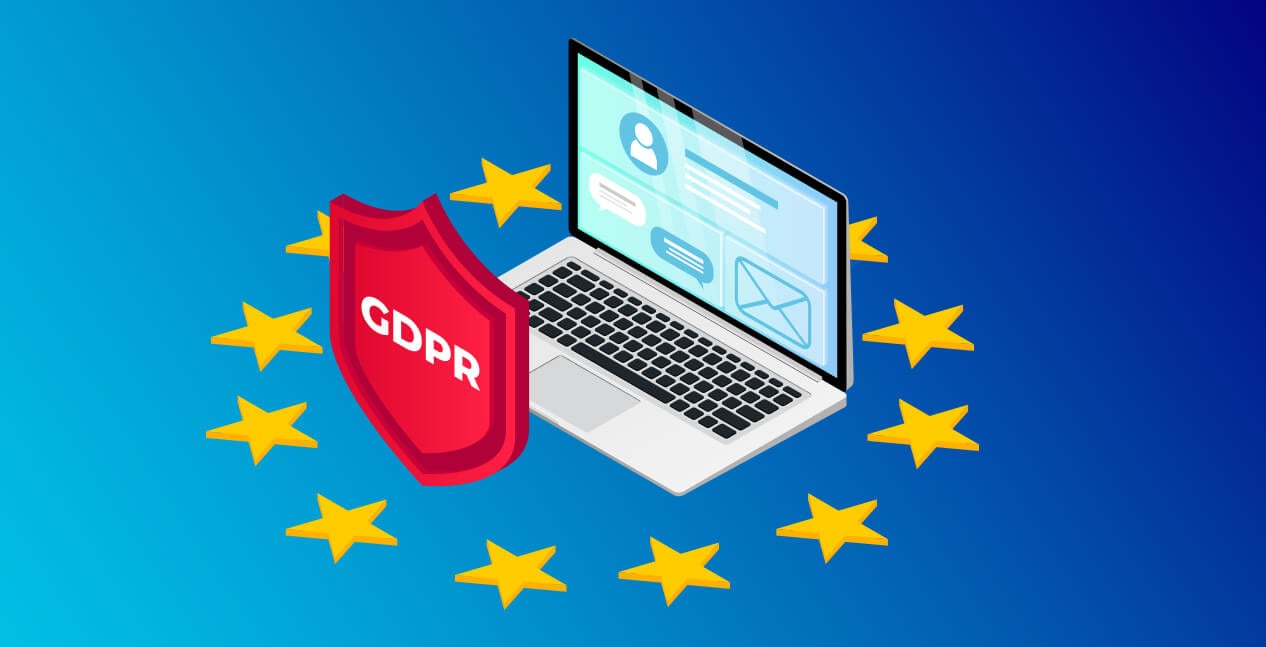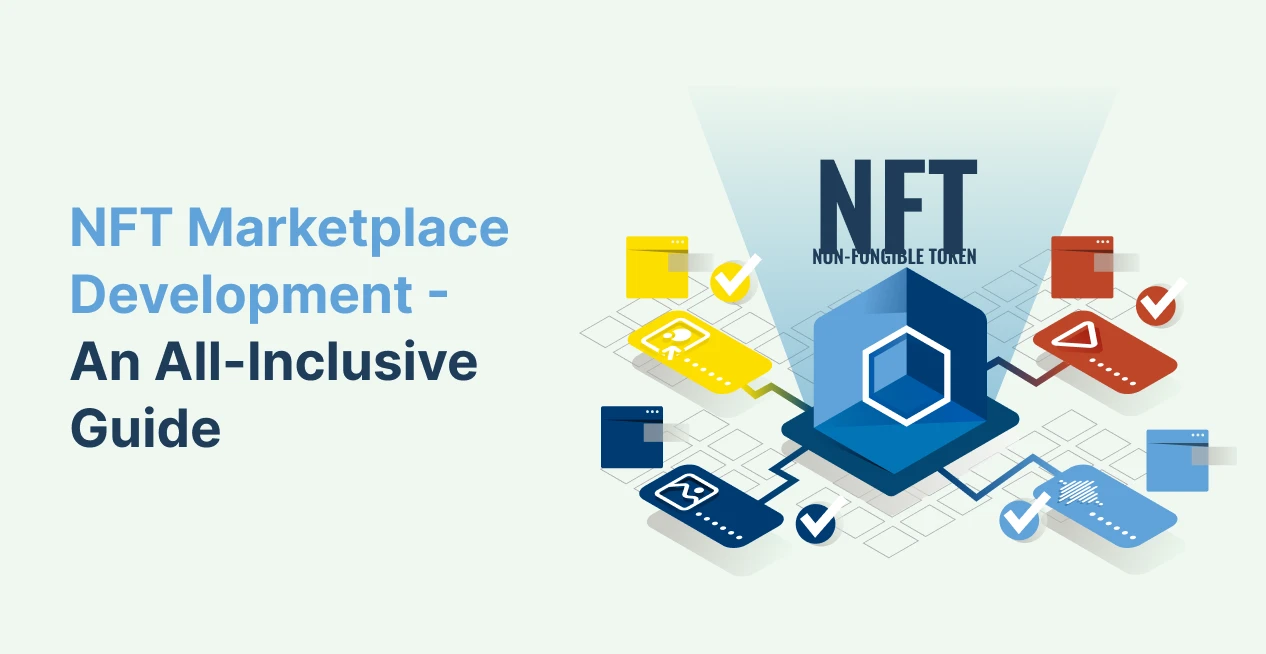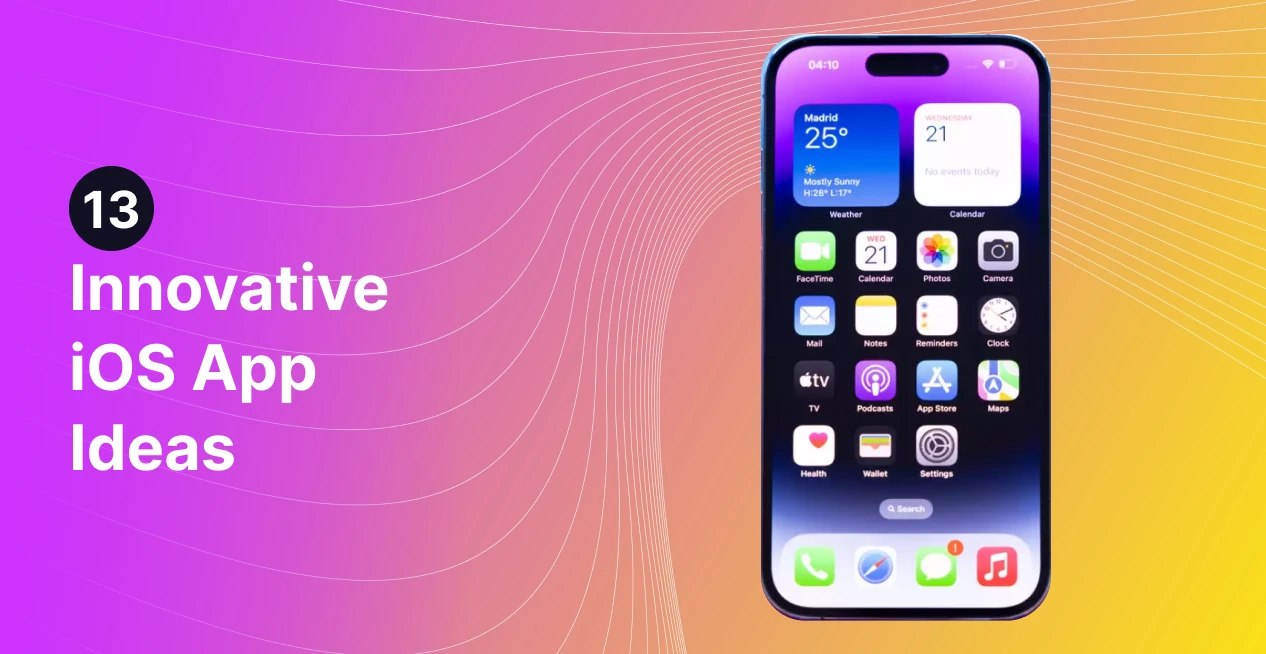-
What is GDPR Privacy Policy?
-
When did the GDPR Privacy Policy Come Into Force?
- On Whom Does the GDPR Privacy Policy Apply?
-
What is Personal Data According to GDPR?
-
What is GDPR Compliance?
-
GDPR Compliance Checklist
-
How to Become GDPR Compliant?
-
7 Principles of GDPR Privacy Policy
-
Data Subject Rights GDPR
- GDPR Fines and Penalties
- Impact of GDPR
-
Data Protection Officer
-
Summary
-
FAQ - GDPR Privacy Policy
What is GDPR Privacy Policy?
European Union passed the GDPR Privacy Policy – General Data Protection Regulation rule in 2016. GDPR has many laws that restrict how companies can manage and share users’ data. It is specially designed to give the citizens of the EU more control over their personal data.
The need for this law arises as people are leaning completely towards digital platforms. Whether it is social media, banking, retail stores, or the government, a vast amount of data is collected, transferred, and analyzed daily. All the personal data from the name, address, and contact details to bank account details and card numbers are stored in various organizations’ databases. And it can be alarming to trust any third person with such sensitive information. This situation gives birth to some rules or laws that can protect the users’ personal data.
When did the GDPR Privacy Policy Come Into Force?
It all started in January 2012 when the European Commission decided to make Europe fit for the digital age. They set out various plans for the protection of the personal data of the citizens of the country. It took almost four years to determine what will be included in the laws, who all will be affected, and how to enforce them.
In December 2015, when the policies were agreed upon and final laws were devised, Andrus Ansip, the Vice President of Digital Single Market, suggested that Europe’s digital future can be built only on trust developed by assuring people about the protection and control of their personal data.
Later, in April 2016, the European Parliament approved GDPR after four years of debate. However, the official documents, directive regulations, and official texts in all the languages were published in May 2016. The actual legislation across the European Union came into force on 25th May 2018.
On Whom Does the GDPR Privacy Policy Apply?
Any organization or company operating within the European Union, or providing services or products to any customers or businesses in the European Union, then GDPR applies to them. Thus, GDPR compliance is a must for all the major organizations of the world whether it is a mobile app development company or a cloud service provider.
To be more specific, the criteria for GDPR privacy policy compliance are,
- Companies present in the EU
- Organizations or Companies processing personal data of the EU’s residents, even if the company has no presence in the EU
- Companies with more than 250 employees
- Companies with less than 250 employees but deals with data processing that can affect the rights and freedom of the EU residents.
Read This: Types of Graphs and Charts
Under the GDPR legislation, there are mainly two types of data-handlers: controllers and processors. Their definitions, according to Article 4 of the EU GDPR are,
Controllers
The natural or legal person, public authority, agency, or other body that, alone or jointly with others, determines the purposes and means of personal data processing.
Processors
A natural or legal person, public authority, agency, or other body that processes personal data on behalf of the controller.
What is Personal Data According to GDPR?
The EU has an elaborate definition of Personal Data that defines what type of data any organization can collect from the users. The purpose of personal data is expanded to include even pseudonymized data, depending on its reachability. Data such as generic, biometric, personal, cultural, online identifiers, mental health information, etc., come under GDPR’s personal data definition. In general, personal data includes,
- Basic information such as name, address, contact information, and identification numbers
- Biometric data
- Location, IP address, RFID tags, cookie data, and other web data
- Health and genetic information
- Sexual orientation
- Political data
- Racial data
- Ethnic data
According to Article 4 of GDPR, the data that contains the following four elements for checking whether the information includes under personal data,
- “Any information”
- “Relating to”
- “An identified or identifiable”
- “Natural Person”
What is GDPR Compliance?
All the data, however securely stored, is subjected to breach. Hackers find their way into any system and get access to the data. Personal information collected might be stolen, lost, or slip into the hands of unwanted and unauthorized people or organizations. When a company becomes compliant with GDPR, it is compelled to protect the collected user data from exploitation or misuse of any kind.
Read This: How to conduct user interviews for mobile app development?
Not only the companies but those who collect and manage personal data legally are also responsible for keeping the data safe from any kind of alteration or unauthorized access. Under GDPR compliance, they have to safeguard the data owners’ rights, or else they will face fines, penalties, etc., mentioned in the laws stated by the EU.
GDPR Compliance Checklist
If you are planning to become GDPR compliant, then it is not a challenging task. You have to make sure that you achieve everything on the GDPR compliance checklist, and you are good to go. The list has different rights and laws for data controllers, data processors, and data subjects. Depending on your organization, you need to select the things that apply to you from the checklist. You can check out the significant aspects from the list here, as the official document is quite exhaustive and tough to interpret.
- Data
- Accountability & Management
- New Rights
- Consent
- Follow-up
- Special Cases
- User Rights
These are just the principal rules. Each of these has a detailed list of rights the organizations need to check to become GDPR compliant.
How to Become GDPR Compliant?
As it is becoming mandatory for all the organizations inside the EU or providing services or products in the EU to become GDPR compliant, there are still many people ambiguous about becoming GDPR compliant. To avoid any fines or penalties and keep users’ data safe from any kind of malicious activity, GDPR compliance is a must. Check out the various steps to become GDPR compliant.
- Maintain an Inventory of Personal Data (Article 30)
- Be Clear with the GDPR Legal Framework
- Data Register Creation
- Classify & Integrate Data
- Prioritize for Creation of Work Flow
- Check, Record, and Process all the Additional Risks
These are just the necessary steps to give you an overview of how to achieve GDPR compliance. So, don’t wait any longer and get started now. It is better to start working towards GDPR compliance from now on rather than paying hefty fines later.
7 Principles of GDPR Privacy Policy
GDPR has outlined mainly seven principles that act as the backbone of compliance. To become compliant with GDPR, you need to comply with all these principles, as mentioned in Article 5. Check these principles out,
- Lawfulness, Fairness, & Transparency
- Data Minimization
- Purpose Limitation
- Storage Limitation
- Accuracy
- Accountability
- Integrity & Confidentiality
Read This: How to Build Customer Trust and Loyalty by Offering Privacy Features?
These principles act as the building blocks for GDPR compliance for any company. These principles are entwined with each other and should be incorporated and achieved in every aspect of compliance.
Data Subject Rights GDPR
EU GDPR serves the primary purpose of keeping user’s data safe and secure from any kind of unauthorized access. To achieve this purpose, GDPR has provided its data subjects certain rights to ensure that their personal data is left untouched by unauthorized personals. Here’s the list of the rights given by GDPR to data subjects as listed in Article 15-20 of GDPR.
- Access by Data Subject
- Right to Rectification
- Right to Erasure/ Right to be Forgotten
- Restriction of Processing
- Right to Data Portability
- Objection
- Right to be Informed
- Right in Relation to Automated Decision Making and Profiling
In order to avoid any kind of non-compliance, you need to ensure that all these rights are appropriately met and exercised wherever they are applied.
GDPR Fines and Penalties
There are stringent rules for non-compliance with GDPR rules. You need to pay fine ranging from 10 million euros to four percent of the company’s global turnover. Isn’t it something big? Billions, maybe. Generally, the amount depends on the severity of the data breach and how much the company complies with GDPR, and whether they are serious.
There are two types of penalties in case of non-compliance with GDPR,
Lower Level GDPR Penalty
The lower level GDPR penalty is applicable if an infringement of the following articles, 8, 11, 25-39, 42, and 43. This penalty is upto 10 million euros or 2% of the company’s annual global turnover.
Higher Level GDPR Penalty
If the infringement of articles 5, 6, 7, 9, 12-22, and 44-49 occurs, a higher level GDPR penalty is applicable. The higher level penalty is upto 20 million euros or 4% of its annual global turnover.
Impact of GDPR
The most significant impact of GDPR on both businesses and citizens is that it puts citizens in the driver’s seat. Companies have to fully comply with GDPR to provide utmost security to their data. Apart from these, there is a noticeable impact on both businesses and citizens.
On Businesses
All the businesses dealing with the users’ personal data should comply with GDPR and appoint a data protection officer or data controller responsible for GDPR compliance. And EU is taking GDPR fines very seriously, so you can go down in millions if you fail to attain GDPR compliance.
Read This: What is SDLC (Software Development Life Cycle)?
Even this affects customer engagement for the businesses as now they have to prove all the consents of their customers for any data. They cannot just show disclaimers or assume.
On Citizens
In today’s consumer-centric world, having GDPR ensures data safety. People are moving towards digitization in everything, and it becomes an alarming situation for the safety of the tons of personal data moving all around. With various articles of GDPR such as data protection, right to access, data portability, etc., the users can rest assured that their data is safe and never gets exposed to hackers or unauthorized people.
Data Protection Officer
A Data Protection Officer (DPO) is responsible for overseeing a company’s compliance with the GDPR privacy policy. Each company that wants to become GDPR compliant should appoint a DPO who monitors the data protection strategy, supervises its implementation, and ensures that there are no loopholes in the GDPR compliance. The tasks of a DPO includes,
- Instruct and explain processors, controllers, and employees working with data processing about the GDPR privacy policy
- Be the point of contact for the data protection authority by providing them all the required details transparently
- To constantly monitor the data protection strategies ensuring that all the policies such as GDPR, state or province policies, etc. are followed in the context of personal data
- Regular training and advice to the processors, controllers, and employees working with data processing about the various data protection strategies, operations, and audit.
Apart from these, there are many detailed tasks enlisted in Article 37-39.
Summary
GDPR is indeed a tough nut to crack if it is new for you. But, it is mandatory and so you need to comply with it as fast as you can. GDPR is definitely a tight slap to all the data abusers who are constantly in search of stealing data or eavesdropping. So, protecting your customers’ data is your responsibility as well as a way to keep your business data safe as well. Discuss more with experts at OpenXcell today about data protection.
FAQ – GDPR Privacy Policy
GDPR is General Data Protection Regulation that is passed by the European Union that imposes protection laws on the personal data of the users collected by organizations. It is subjected to only the citizens of EU.
It protects the personal data of the people of the European Union. The whole point of GDPR is to protect the data of residents of EU.
After the UK’s exit from EU GDPR, the personal data no longer comes under the laws of GDPR. But, the companies of the UK providing any kind of service in the EU must comply with GDPR.
GDPR poses an imposition on data breach and unauthorized access of personal data of the EU residents. The primary rules of GDPR privacy policy include protecting the data subject’s rights, safe data transfer, content privacy, breach notifications, compliance to the guidelines, and many more.
GDPR compliance checklist is the one that you need to strictly comply with in order to provide services in the EU or set up your company in the EU. This checklist consists of certain aspects that need to be met with in order to achieve GDPR compliance.
Any company in the EU, providing services or products to the EU residents or any company dealing with the EU residents’ personal information has to comply with the GDPR privacy policy.
There are two types of fines, each for violation of different articles of the GDPR privacy policy. The lower fine is upto 2 million euros or 2% of the company’s annual global turnover, and the higher fine is upto 4 million euros or 4% of the company’s annual global turnover.
All the companies complying with the GDPR privacy policy need to appoint a Data Protection Officer responsible for understanding GDPR policies and ensuring that the company complies with it or not. Data protection authority keeps contact with only DPO for any updates. DPO must know the law as well as information technology.
Organizations can comply with the GDPR privacy policy by ensuring that the personal data that they are collecting is safe and remains safe throughout without any breach or misuse. There is a GDPR compliance checklist that you need to follow in order to comply with GDPR.
You can get all the documented and detailed information about the GDPR privacy policy on https://gdpr-info.eu/.
It can cost time and money to become GDPR compliant for the companies currently not using a well-structured architecture with all the necessary privacy and security mechanisms.
Processors and controllers are data-handlers. Basically, controllers are the natural or legal person, public authority, agency, or other body that, alone or jointly with others, determines the purposes and means of personal data processing. And processors are the natural or legal persons, public authority, agency, or other body that processes personal data on behalf of the controller.
A huge number of restrictions and rules will be imposed on your company if you want to become GDPR compliant. You need to maintain transparency, fairness, etc., for managing personal data. Ensure security, confidentiality, and integrity of users’ personal data.
GDPR privacy policy was released to enforce uniform data protection laws for all EU residents. The reasons also include understanding the sensitivity of the resident’s personal data and its protection by the various companies collecting and protecting personal data.
Yes, for the EU, GDPR includes legal requirements under the issued right to data protection. But, other countries such as India don’t have a legal requirement.








